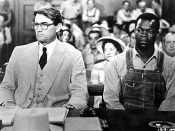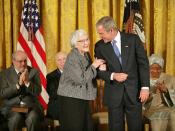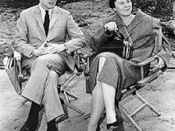To Kill a Mockingbird: Analysis of symbolism.
To Kill a Mockingbird is not just a simple story of growing up. This book contains metaphors and symbolism that greatly increase its literary value.
Mockingbird
The most important symbol in this story is probably the mockingbird. The theme of the mockingbird is shown in the title and throughout the rest of the book. After Scout and Jem received air rifles for Christmas, their father Atticus said to them "Shoot all the bluejays you want, if you can him 'em, but remember it's a sin to kill a mockingbird."(p.129) Later, Miss Maudie explains that "Mockingbirds don't do one thing but make music for us to enjoy."(p.129) Here we learn that the mockingbird is a harmless and pleasant creature. In the story, the mockingbird symbolizes two people: Arthur "Boo" Radley and Tom Robinson. Both are discriminated against in Maycomb, when they are, in fact, gentle and kind people.
People referred to Boo as "a malevolent phantom" and that "any stealthy small crimes committed in Maycomb were his work."(p.11) This hatred began as fear because the Radleys were people who kept to themselves, and this act was "a predilection unforgivable in Maycomb"(p.13) In the end of the story, our opinion of Boo is changed completely as Scout overcomes her fear and discovers that Boo was really just a big child.
Tom Robinson, on the other hand, was discriminated against because he was black. Even though it was clear that he was wrongfully accused, the jury could not vote in favour of a black man over two whites. "And so a quiet, respectable, humble Negro who had the unmitigated temerity to 'fell sorry' for a white woman has had to put his word against two white people's."(p.295)
Lee uses the mockingbird frequently in the book,


